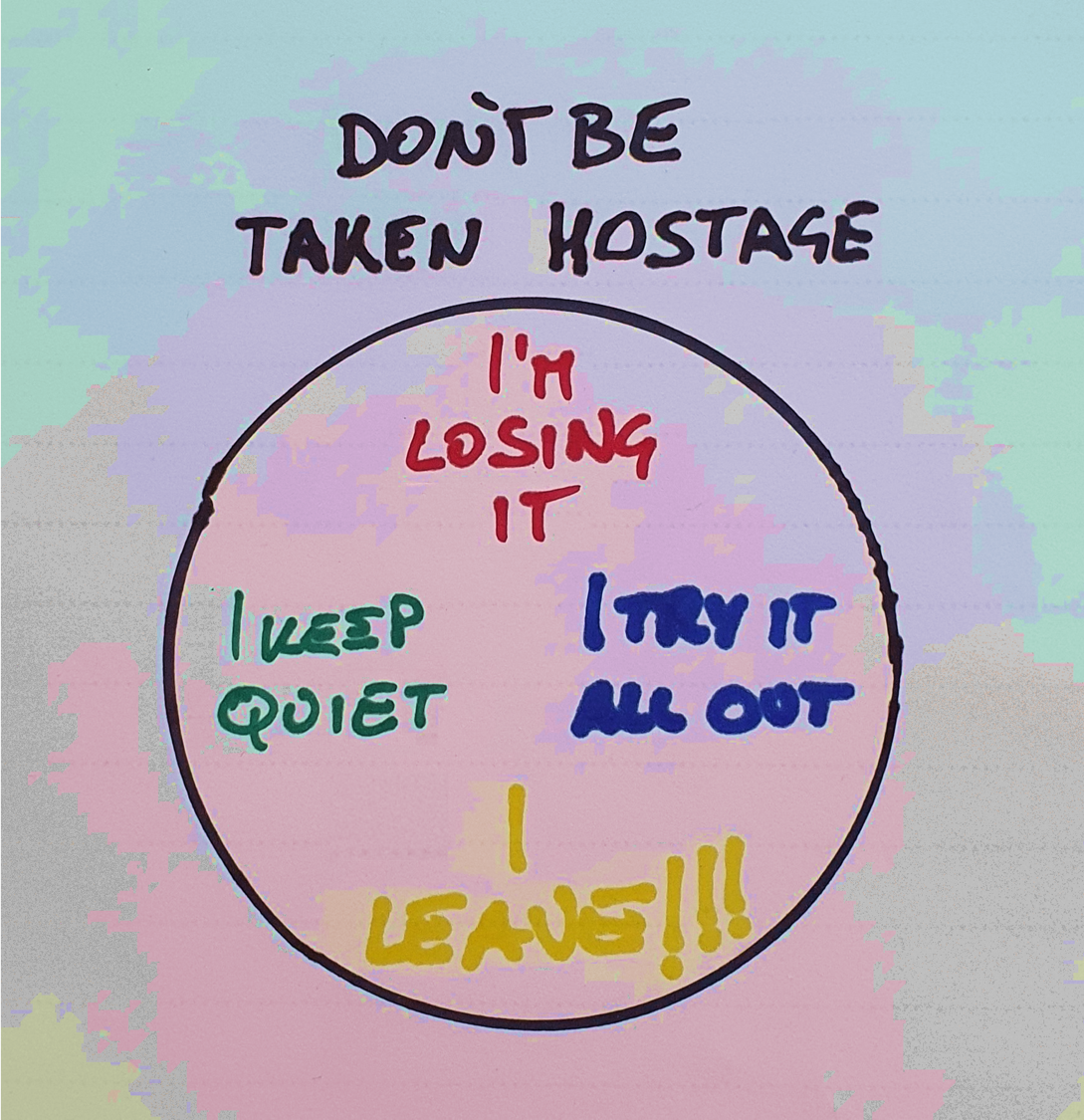Agile professional: don’t be taken hostage
Coaching literature extensively covers the “don’t collude” principle. But you also need to know the “don’t be taken hostage” principle.
Imagine you are helping someone with a gambling problem.
As a start, with your support, they lock themself out of the betting websites and apps, to avoid temptation.
But later they ask your help to set up a new account in your name to make a small bet.
Saying yes to that would mean colluding with the very same gambling problem they are trying to solve.
An example of collusion for an Agile professional could be contributing to Agile Imposition, a well know problem found in parts of the Agile industry.
Now imagine that moved by the suffering of those family members indirectly affected by the resulting gambling debts, you start lending them your own money ending up suffering yourself the consequences of the gambling problem you were helping to solve. This would have turned you into a hostage of that person’s gambling problem.
In the past years, I had a few conversations with Scrum Masters and Agile Coaches after they left a job where they have been taken hostage. From it I learned that being taken hostage wasted their time and energy, lowered their confidence, left them mentally exhausted, it did nothing good for their career, but also did nothing good for the teams, departments and the organisation they were supporting. No winner.
Getting out of a hostage situation is not easy at all. Getting out of it well is hard.
Being taken hostage may happen, for example, in organisations that are hostile to the values, principles, and behaviours the Agile professional has been hired to seed and grow. It is something that I and many others have experienced. And below are a few scenarios and reflections from my own experience.
- Am I losing it?
Being taken hostage may happen before the Agile professional fully realises it. It may start with a sense of discomfort that gradually emerges. Some unexpected or atypical emotional reactions may be the warning signs.
Talking with other Agile professionals in the same organisation may help validate those sensations and realise what is going on. And it may bring to the realisation that the problem is not you, but the surrounding environment.
- I keep quiet
Being an Agile professional means being a change agent (oh yes, Agile is about embracing change, not minor cosmetic improvements, or renaming things and keep doing the same). And change often comes with some frictions. Who chooses to be an Agile professional, chooses to deal with such frictions too.
And change often takes more time than people think.
So one can choose to be patient, give time for things to change, while gently and firmly nudging those working to develop new skills and/or new behaviours. And this can be ok, as long as there is some actual progress, it may be small and gradual as long as constant changes in behaviours are happening.
When both progress and learning are lacking, one may choose to keep quiet, remain under the radar to avoid risks, for example not to lose their job. For a change agent, such an approach is not an ethical option (being a change agent does not come with job security) and is not good at all, because it does not benefit their work nor their client.
- I try it all out
When a hostage situation starts to materialise itself, one may have an impulsive emotional reaction. One may try to hit back driven by anger. Such an approach is not beneficial either for the Agile professional (in terms of the effectiveness of the work and for their professional credibility) nor for their client.
Instead, one can calmly and intentionally decide, driven by care and compassion and humility, regardless of the frictions, to try it all out doing the right thing to help their client, with all the risks that this implies. Doing this, one accepts the risk of losing their job at any time. This option starts to make sense when one becomes aware that without changing direction there is no progress and nothing left to save there, it would not be beneficial for them nor the client to let things continue as things stand.
- I leave!!!
No Agile professional should experience being taken hostage. And leaving is a perfectly valid and very healthy response. With the advantage that it allows the professional the choice of the moment. But one needs to leave before becoming exhausted, physically, mentally, professionally. And the best way to leave is with calm, kindness and care toward the client. It is not our right to decide for someone else when it is the right time for them to embrace change, one can only wish them the best.

Elevate your Agility.
See how we can help.
You, your team, your organisation.
